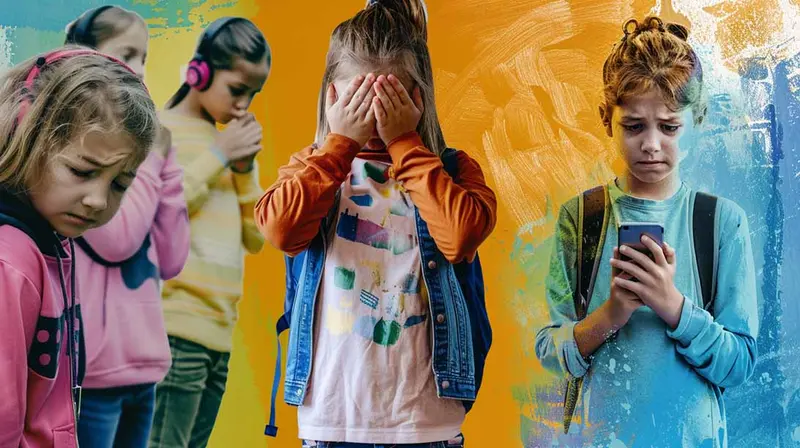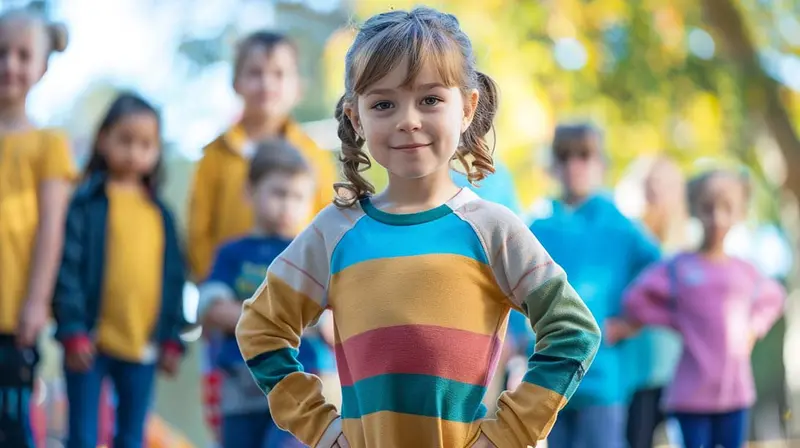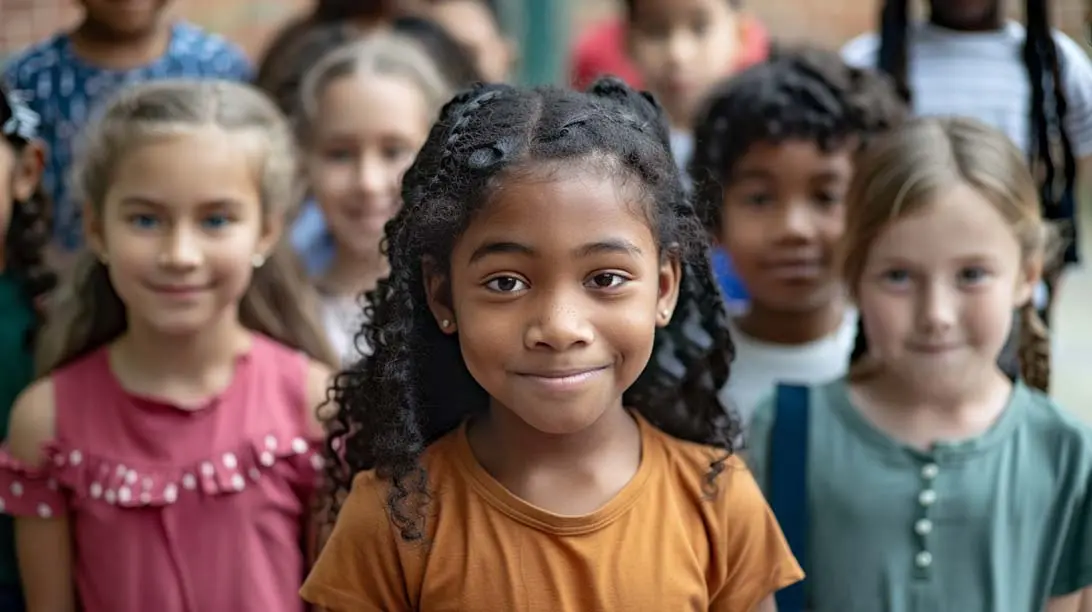Empowering Responses to Protect Your Child Being Bullied
Is your child being bullied? Knowing the right steps to take can be overwhelming. In this article, we’ll help you spot the warning signs, have meaningful talks with your child, respond with practical strategies, and work with their school for a safer environment. Plus, explore legal options and community support to protect your child.
Key Takeaways
- Early recognition of bullying is crucial, with signs manifesting as physical (injuries or damaged belongings), emotional (social withdrawal, self-harm), and academic (decline in grades, absenteeism) indicators that require prompt action from caregivers.
- Bullying can take multiple forms, including verbal (teasing, name-calling), physical (hitting, pushing), social/relational (exclusion, rumor-spreading), and cyberbullying (online harassment), each with potentially severe emotional and physical repercussions.
- Effective responses to bullying encompass open communication and establishing trust with the child, developing the child’s assertiveness and social skills, collaborating with school personnel on reporting and safety planning, and utilizing legal and community resources such as anti-bullying laws and community organizations.
Recognizing the Signs of Bullying

Bullying may not always be obvious, and unfortunately, many children suffer in silence. Understanding the signs of bullying can help us intervene promptly and offer the necessary support. Let’s delve deeper into these signs categorized into physical, emotional, and academic indicators.
Physical Indicators
Physical signs are often the most apparent indicators of bullying. Unexplained injuries such as scratches, bruises, or cuts might suggest that your child is a victim of physical bullying. Furthermore, damaged or frequently lost personal belongings could hint at a bullying problem at school.
Lastly, children who are bullied may often complain of feeling sick or having pains, which may be a response to the stress or fear of bullying.
Emotional Indicators
While physical signs may be easier to spot, emotional indicators require a keen eye and an empathetic ear. Bullying can lead to mental health issues such as anxiety and depression in young individuals. Children dealing with bullying might show signs of social withdrawal, including avoiding social interactions and spending less time with friends.
Some emotional indicators that a child may experience bullying and be trying to cope with the effects include:
- Withdrawal from social activities or relationships
- Changes in eating or sleeping patterns
- Decline in academic performance
- Engagement in self-harm or other risky behaviors
- Decline in self-esteem
It is important to be aware of these signs and take appropriate action to support the child.
Academic Indicators
The effects of bullying often spill over into a child’s academic life. Some signs that a child is experiencing bullying include:
- A decline in grades
- Loss of interest in school
- Increased absenteeism
- Trouble concentrating
- Diminished participation in school activities
These signs can suggest that a child is being bullied and may lead to a decline in academic performance.
Furthermore, bullying can result in victims avoiding school activities, skipping school, or even contemplating dropping out, which can negatively impact education statistics.
Types of Bullying Encountered by Children

Bullying comes in many forms, and each can be equally damaging. Understanding the types of bullying behavior your child may encounter can help you better prepare them and respond appropriately.
Let’s explore the four common types of bullying: verbal, physical, social/relational, and cyberbullying.
Verbal Bullying
Verbal bullying involves the use of words to hurt or demean a person. It includes acts such as name-calling, teasing, and threats meant to emotionally wound the victim. The harmful impact of verbal bullying can be significant and long-lasting, affecting a person’s emotional well-being.
Physical Bullying
Physical bullying involves aggressive behavior in the form of actions intended to cause physical harm. This includes actions such as:
- hitting
- pushing
- kicking
- any other form of unwanted physical contact
Parents should be vigilant of unexplained injuries or damaged personal belongings as they might be signs of physical bullying, which can be a manifestation of youth violence.
Social/Relational Bullying
Social bullying aims to damage a child’s reputation or relationships. This form of bullying includes intentional exclusion, spreading rumors, and manipulating friendships. It’s important to note that relational bullying can be subtle but can inflict deep emotional wounds.
Cyberbullying
With the rise of digital platforms, cyberbullying has become an increasing concern. Bullying that occurs through social media, messaging apps, and other online platforms is considered cyberbullying.
This can take the form of sharing personal information, posting harmful content, or harassing individuals online.
How to Talk to Your Child About Bullying

Open communication between parents and children is critical in addressing bullying. However, broaching the subject can be challenging for both parties. In this section, we will explore how to establish trust, actively listen, and provide support when discussing bullying with your child.
Establishing Trust
Building a trusting relationship with your child provides a safe space for them to share their experiences. Parents can encourage their child to discuss bullying by naturally incorporating the topic into conversations about school life or media portrayals.
Demonstrating respectful behavior towards others models positive social interactions for your child.
Active Listening
Active listening is a crucial part of any conversation about bullying. Listening to your child without immediate judgment or anger can make them feel safe to communicate their experiences.
Offering comfort and understanding can foster a supportive and empathetic environment.
Providing Support
Supporting a child who has been bullied is essential in their recovery process. It is crucial to:
- Reassure your child that they are not to blame for being bullied
- Express belief and support
- Affirm that the bully’s behavior is the issue, removing any misplaced responsibility from the child.
Strategies for Empowering Your Child to Respond to Bullying

While prevention is the best way to handle bullying, it’s equally important to equip children with strategies to respond effectively when they encounter bullying. In this section, we will delve into assertiveness training, building social skills, and encouraging peer support.
Assertiveness Training
Assertiveness training can empower a child to confidently express their feelings and defend their rights without resorting to aggression. This strategy involves teaching children how to refuse unreasonable demands and express their feelings honestly and directly.
Building Social Skills
Building social skills can help a child navigate challenging social situations and prevent bullying. Encouraging children to engage in diverse group activities and team sports can enhance their social skills.
Additionally, teaching children social problem-solving skills can equip them to address bullying effectively.
Encouraging Peer Support
Peer support plays a significant role in preventing bullying. Fostering an environment where peers actively support and defend each other can lead to a reduction in bullying incidents.
Ignoring minor bullying attempts and participating in social groups where they feel supported can also combat bullying.
Collaborating with School Personnel to Address Bullying

Elementary school personnel, including school administrators, can play a vital role in addressing bullying and school violence not only for younger children but also for middle school and high school students. By collaborating with teachers and administrators, parents can ensure the school environment is safe for their school age children on the school grounds and within the school property.
In this section, we will discuss strategies for reporting incidents, developing a safety plan, and monitoring progress.
Reporting Incidents
Reporting bullying incidents to school staff is a critical first step in addressing the issue. Involving school officials like teachers or counselors can lead to interventions that prevent further bullying.
School systems also have mechanisms in place for documenting reports of school bullying, which are crucial for taking appropriate action against such incidents.
Developing a Safety Plan
A safety plan provides a clear course of action for addressing bullying incidents. Such a plan is developed collaboratively with parents, school officials, and the student, ensuring everyone involved has a clear understanding and role in ensuring the student’s immediate and future safety.
The detailed plan includes solution-oriented strategies and assigns specific responsibilities for each action to the involved parties.
Monitoring Progress
Continuous communication with school authorities is vital to ensure the implementation of anti-bullying measures and monitor the affected student’s well-being. Staying vigilant after reporting bullying incidents involves monitoring the effectiveness of the safety plan and ensuring the well-being of the child.
Legal and Community Resources for Combating Bullying

Tackling bullying is a collective effort, involving not just parents and schools, but also the wider community and legal system. In this section, we will explore the legal and community resources available to combat bullying, focusing on anti-bullying laws and community organizations.
Anti-Bullying Laws
Anti-bullying laws play a crucial role in tackling bullying in schools. Each state in the U.S. has distinct approaches to handling bullying, with laws and regulations mandating school districts to implement certain bullying policies and procedures.
Understanding these laws can empower parents to ensure their child’s rights are protected.
Community Organizations
Community organizations provide invaluable support and resources for combating bullying. Local neighborhood centers, youth clubs, and national entities like the National Bullying Prevention Center offer educational resources, support groups, counseling services, and anti-bullying campaigns. In this context, the national center plays a crucial role in addressing bullying issues.
Summary
Bullying, in any form, can have significant and lasting effects on children. As parents, understanding the signs of bullying, the types of bullying, and how to talk to your child about it is the first step. Equipping your child with the right tools to respond to bullying, actively collaborating with school personnel, and utilizing legal and community resources are key strategies to address and prevent bullying. Together, we can create a safer, more inclusive environment for our children.
Frequently Asked Questions
What are the signs that my child may be experiencing bullying?
If your child is showing unexplained injuries, damaged belongings, anxiety, depression, declining grades, or increased absenteeism, these may be signs that they are experiencing bullying. Take these signs seriously and consider discussing your concerns with your child's school or a mental health professional.
What are the different types of bullying that my child may encounter?
Your child may encounter various forms of bullying, including verbal, physical, social/relational, and cyberbullying. It's important to be aware of these different types and to have open communication with your child about their experiences.
How should I talk to my child about bullying?
When talking to your child about bullying, it's important to establish trust, actively listen, and provide support. Encourage open communication, listen without judgment, and reassure your child that they are not to blame for being bullied.
What are some strategies to empower my child to respond to bullying?
Encouraging assertiveness training, social skill development, and peer support can empower your child to respond to bullying effectively. By helping your child express their feelings confidently and interact with supportive peers, these strategies can improve their ability to handle bullying situations.
How can I collaborate with school personnel to address bullying?
To collaborate with school personnel to address bullying, you should report incidents to staff, develop a safety plan together, and regularly monitor progress. This is crucial for ensuring a safe environment for everyone.
